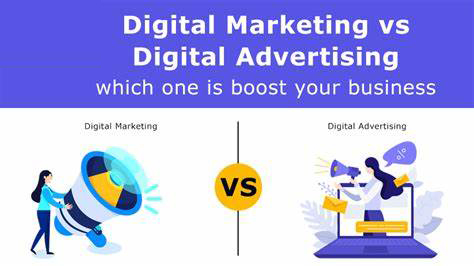Structure, systems, and secrets: How to Automate Your Digital Course Business in 5 Easy Steps Before It Overwhelms You.

> If your business depends entirely on your manual effort to function, it’s not a business—it’s a job. And a stressful one at that.
What you need is a system, not more hustle.
You need to step out of the technician role and into the true CEO role.
And that starts with automating and structuring your business like a real enterprise—one that can run even when you’re not glued to your screen.
Digital PR: What it is and how to implement one in 5 Simple Steps

Want to boost your brand visibility, SEO, and credibility online? Digital PR is the modern strategy that gets your business featured on trusted websites, earns quality backlinks, and connects you with the right audience. In this post, you will learn what Digital PR is, why it matters, and how to create a strategy that drives real results.
5 REASONS Why Your E-commerce Funnel Is Not Converting the Right People — And How to Fix It

If you’re targeting everyone, you’re converting no one. Many e-commerce business owners run Facebook or Google ads with wide demographics, hoping to cast a large net. But broader targeting often results in attracting people who aren’t a good fit for your offer
Content Promotion: 3 Ways to Easily Distribute Content

Almost as crucial as producing content is distributing it. Publishing it on your own website is frequently the first step in this process, but it won’t have the most impact. Even massively popular companies like Red Bull and The New York Times employ a wide range of methods for content promotion. Putting oneself in the position of your target audience is crucial to creating an effective distribution strategy for your content. Which channels do they like to use to view and consume your material, and where are they active? For this, use your buyer personas! Distribute ideas, not articles Getting people to click on a URL is the definition of content promotion, according to the majority of individuals. But Promotion is more than merely persuading visitors to click on a link; if that restriction is lifted, a plethora of different promotion strategies become available. We could do actions that aren’t often related to promoting content: Participate at conferences, post freely on social media, create or appear on podcasts, and more. An article is just a container. When we produce material, we typically do so to further a bigger objective: sharing an value. examining content promotion from this perspective gives us two additional insights: Your idea must be valuable. You can’t just write a piece and hope it gets shared. Your work must be creative and distinctive if you want people to read it, share it on social media, in newsletters, or in communities, and get links. Ways to promote your content Getting people to see your idea means acquiring an audience. There are really only three ways to do this Personal audience: own your reach Promoting your content effectively starts with building an audience—people who actively choose to follow you through newsletters, podcasts, or social media. While social platforms like X, LinkedIn, and Instagram are excellent for reaching your target audience, they come with limitations. Algorithm changes or policy violations can suppress your content or shut down your account altogether. This is why focusing on building an email list is crucial. Unlike social media, your email list is entirely yours, allowing you to reach your audience anytime, as long as you have their permission. To encourage subscriptions, offer a compelling incentive, such as an eBook, email course, or exclusive content. Even simple trust or the promise of more valuable ideas can motivate people to sign up. Pair your email strategy with a robust website. Use landing pages tailored to downloads or infographics to funnel visitors into your email list. Together, your website and email list create a powerful, reliable foundation for distributing your content and engaging your audience. Leverage earned media: borrow audience from major platform One way to expand your reach is by borrowing an audience—finding platforms where your target audience already spends time, such as Google, YouTube, or other social media platform. By adhering to the platform’s rules and optimizing your content, you can get in front of people who don’t yet follow you. For instance, you could create SEO-optimized content to rank on search engines, share valuable insights in relevant subreddits, or publish engaging videos on YouTube. To rank well on search engines, focus on three key areas: Equally impactful is earned media—getting third parties to share or talk about your content. High-quality, shareable content is essential for this. Encourage employees to share your content, as their posts often outperform company pages on platforms like LinkedIn. Collaborating with industry influencers and guest bloggers can also amplify your reach. Their endorsements help build credibility while introducing your brand to wider audiences. Paid Media: Buying an Audience If you have the budget, paid media is a powerful way to reach a larger audience quickly. Platforms like Google Ads, Bing Ads, and social media channels (Facebook, Instagram, TikTok) allow you to target your audience with precision, segmenting by demographics, interests, and geography. Paid ads are especially effective for getting immediate feedback on your campaigns, enabling you to experiment and refine your approach in real-time. Native advertising has also gained traction, letting you promote content in an editorial format on external websites or content partners. For instance, you could use blogs, infographics, or videos to engage audiences seamlessly within their browsing experience. Case studies like Teledyne CARIS showcase how native content marketing can successfully drive engagement. However, ads are not infinitely scalable, especially when used to promote content where ROI isn’t immediate. To maximize your investment, pair paid campaigns with strategies to build an email list or strengthen your SEO foundation. This ensures the traffic you’ve paid for continues to serve you over the long term. Conclusion Content promotion isn’t about pushing an article into the void, hoping for engagement. Your article is merely a vessel; your end goal is to share a valuable idea with the world. Thinking of promotion from that perspective will open up your world in terms of potential distribution channels. You no longer have to rely on the XX promotion tactics you find online, all dedicated to securing that one click. Whether you’re leaning towards an agency for its comprehensive services or a freelancer for their specialized skills, we are here to help.
5 Steps to Create an Outstanding Marketing Plan

Introduction Does your team’s marketing plan undergo a thorough annual review? Maybe you should Things may get complicated without a yearly marketing plan, and without one, it’s almost hard to estimate how much money you’ll need for initiatives, hiring, and outsourcing during the course of the year. We’ve put together a list of things to include in your plan and a few different planning templates so you can quickly fill in the blanks and create a better plan. Let’s start by discussing what a marketing plan is, how to write a marketing plan and then examine the contents of a high-level marketing plan. Marketing Plan Outline Marketing plans may be extremely technical to reflect the sector you’re in, whether you’re selling to consumers (B2C) or other companies (B2B), and how big your online reputation is. However, here are the fundamentals that any great marketing strategy includes: 1. Business Summary In a marketing plan, your business summary summarizes everything about the business. Include all important information so that all stakeholders, have a thorough understanding of your business before moving on to the more strategic aspects of your plan. Even if you’re presenting your plan to long-term employees, getting everyone on the same page is beneficial. Most business summaries contain: 2. SWOT Analysis The business overview of your marketing plan also includes a SWOT analysis that addresses the opportunities, threats, weaknesses, and strengths of your company. This information must be included in order for you to develop focused tactics that will enable you to build on your advantages and mitigate your disadvantages. In my perspective, conducting a SWOT analysis takes a lot of patience since, in order for it to be completely accurate, market research and competitor analysis are necessary. I usually come back to this area from time to time and make changes based on new information I learn about my industry and competitors. 3. Business Initiatives A marketing plan’s business initiatives section aids in organizing your department’s numerous objectives. Take cautious not to include corporate projects that are more broad in nature—these are often included in a business strategy. The projects that are unique to marketing should be described in this area. Additionally, you will outline the projects’ objectives and the metrics by which they will be judged. Every effort should set goals using the SMART technique. They ought to be time-bound, relevant, measurable, reachable, and detailed. A general objective could be, “Grow my Instagram following,” for instance. However, this objective may be SMARTened up to something like “Grow my Instagram following by twenty percent by September.” Do you notice the difference? 4. Customer Analysis You have lots of room in this section of the marketing plan outline to present all the information you gathered from your market research. It may be simpler to put together this portion of your marketing plan if your business has already conducted a thorough market research study. In any case, make an effort to conduct research before compiling it into a paper that can be shared, like this one. In the end, this part of your marketing strategy will assist you in defining your buyer persona and the industry you’re selling to. A semi-fictional depiction of your ideal client, with an emphasis on characteristics such as: 5. Competitor Analysis When writing a marketing plan, a competitive analysis must be included. When it comes to finding answers to their problems, your buyer persona has options. These options include the kinds of solutions they are considering and the suppliers who can implement them. You should analyze your competitors’ strengths and weaknesses as well as any gaps in the market that you might be able to close throughout your market research. This may consist of: A solid marketing strategy should include room to mention the specific products you compete with, along with other aspects of the other company’s approach, such their customer service reputation or blogging endeavors. Keep this section of your plan straightforward; complete your competition analysis in a different document. 6. Budget When I created my first marketing plan, I made the error of conflating the marketing budget section of my initial marketing strategy with the pricing of my product and other financial information. A better way to approach this section is to think of it as describing the amount of money that the company has given the marketing team to pursue the projects and objectives listed in the elements above. You should think about itemizing this budget based on the exact items you plan to spend it on, depending on the number of separate expenses you have. Examples of marketing costs are as follows: Knowing the budget and doing analysis on the marketing channels you want to invest in, you should be able to come up with a plan for how much budget to invest in which tactics based on expected ROI. From there, you’ll be able to come up with financial projections for the year. These won’t be 100% accurate but can help with executive planning. 7. Marketing plan Channels A list of your marketing channels ought to be part of your marketing strategy. Although your business may use specific ad space to sell the product itself, your marketing channels are where you will post the content that informs consumers, creates leads, and builds brand awareness. This is the place to discuss publishing on social media, if you currently publish or want to post. Map out the social networks you want to start a business page on, what you’ll use the network for, and how you’ll measure your success on it using the Marketing Channels portion of your marketing plan. It could be a good idea to use content marketing tools and turn lengthy content into more manageable social media updates if you also have a blog. This increases website traffic and optimizes return on investment. However, make sure to address it in this section. How to Create a Marketing Plan 1. Evaluate the situation at hand. I start by performing a
Social Media Branding: How To Get It Right

Introduction Welcome, fellow adventurers, to the wild and wacky world of Social Media Branding! Prepare to embark on a thrilling journey through the labyrinthine landscape of likes, shares, and hashtags as we uncover the secrets to mastering the art of social media branding with finesse and flair. Imagine, if you will, a grand masquerade ball where every brand dons its most dazzling attire and parades across the digital dance floor of social media. From the majestic lions of industry to the mischievous unicorns of startups, each brand vies for attention, recognition, and adoration in the whimsical realm of likes and retweets. Ah, but why, you may ask, should we bother donning our digital finery and joining the merry masquerade of social media branding? Well, dear friend, in a world where attention spans are shorter than a gnat’s hiccup and competition is fiercer than a game of musical chairs, effective branding is the key to standing out in the crowd, capturing hearts, and winning the coveted crown of consumer loyalty. Understanding Your Brand Identity Ahoy, mateys! Now that we’ve set sail on the choppy seas of social media branding, it’s time to hoist the Jolly Roger and unfurl the sails of your brand identity. Prepare to navigate the treacherous waters of values, personality, and target audiences as we chart a course towards branding greatness! Picture this: Your brand is a swashbuckling pirate ship, sailing the seven seas in search of treasure and adventure. But every pirate worth their salt knows that a ship without a compass is doomed to wander aimlessly. Define your brand’s values and personality to serve as your trusty compass, guiding your every move and ensuring that you stay true to your course. Identifying Your Target Audience Ahoy, me hearties! Every pirate captain knows that a successful plundering requires a keen eye for spotting treasure-laden ships on the horizon. Similarly, identifying your target audience is the key to plundering hearts, minds, and wallets in the vast ocean of social media. Know thy audience, understand their hopes, fears, and desires, and tailor your messaging to resonate with their inner buccaneer. Establishing Consistent Branding Elements Ahoy, landlubbers! Prepare to hoist the sails and set a steady course as we navigate the choppy waters of social media branding. In this leg of our adventure, we’ll delve into the art of establishing consistent branding elements that’ll make your brand stand out like a lighthouse in the stormy sea of social media. Designing a Cohesive Visual Identity Avast, me hearties! Just as a pirate ship’s flag strikes fear into the hearts of its enemies, your brand’s visual identity should command attention and leave a lasting impression. From colors and fonts to logos and imagery, design a visual identity that’s as striking as a cannon blast and as memorable as a legendary treasure map. Let your brand’s colors fly high and proud, guiding your audience like stars in the night sky. Crafting a Unique Brand Voice and Tone Shiver me timbers! Every brand has its own unique personality, just like every pirate has their own swagger. Craft a brand voice and tone that’s as distinctive as a pirate’s accent and as captivating as a mermaid’s song. Whether you’re a swashbuckling adventurer or a witty raconteur, infuse your brand’s communications with personality and charm that’ll have your audience hanging on your every word like a crew of loyal buccaneers. Choosing the Right Social Media Platforms As we continue our quest for social media branding treasure, it’s time to chart a course through the bustling ports of social media platforms. But fear not, for with the right map and compass, we’ll navigate these treacherous waters with the skill of seasoned sailors. Understanding Platform Demographics and User Behavior Avast ye! Before we weigh anchor and set sail, it’s crucial to understand the lay of the land – or in this case, the demographics and behaviors of each social media platform’s denizens. From the bustling bazaars of Facebook to the fast-paced waters of Twitter and the visual vistas of Instagram, each platform attracts a unique crew of scallywags and swashbucklers. Know thy audience and their preferred haunts, and you’ll be well on your way to capturing their hearts and minds. Selecting Platforms That Align With Your Brand and Audience Hoist the colors, Now that we’ve surveyed the social media seas, it’s time to choose the platforms that best align with your brand’s mission, values, and audience. Are you a bold and adventurous brand seeking new horizons? Perhaps Instagram’s visual storytelling and exploration-friendly features are your best bet. Or are you a witty wordsmith looking to engage in lively banter? Twitter’s fast-paced and conversational nature might be just the ticket. Choose wisely, and you’ll find yourself sailing towards social media success with the wind at your back. Creating Compelling Content Ahoy, me hearties! As we embark on our voyage through the choppy seas of social media branding, it’s time to unfurl the sails and navigate the waters of content creation. But fear not, for with a bit of creativity and cunning, we’ll craft content that’ll have your audience shouting “anchors aweigh” and sharing like there’s no tomorrow! Strategies for Creating Engaging and Shareable Content Hoist the Jolly Roger, me hearties! To capture the attention of your audience and keep them coming back for more, you’ll need to deploy a treasure trove of content strategies. From storytelling and humor to education and inspiration, each piece of content should be like a chest of gold – valuable, irresistible, and worthy of sharing with friends and fellow adventurers. Dive deep into the depths of your brand’s personality and values, and you’ll uncover the hidden gems of content that’ll spark conversation and ignite engagement like a cannon blast. Leveraging Different Content Formats (Text, Images, Videos, etc.) Avast ye! Just as a pirate’s treasure hoard contains riches of every shape and size, your content arsenal should include a variety of formats to cater to the diverse tastes of your audience. From swashbuckling tales
Nigerian Business Growth Blueprint: Delivering Maximum Value through Your Website

Introduction As a Small and Medium-sized Enterprise (SME) owner in Nigeria, you’ve likely heard of the immense potential a well-constructed website holds for your business. However, the absence of a website can be a significant roadblock on your path to success. It’s akin to navigating a bustling marketplace with your eyes closed, missing countless opportunities to reach potential customers and deliver maximum value. in this article, we’re going to unveil the Nigerian business growth blueprint – a roadmap to harnessing the power of a website to propel your SME to new heights. By the time you finish reading, you’ll not only understand the pivotal role a website plays in your business’s growth but also discover a unique offer to help you convey your intended message to your audience through curated SEO. Let’s embark on this transformative journey together. The Power of a Well-Crafted Website A well-crafted website is not just a digital business card; it’s the beating heart of your online presence. Here’s why it’s indispensable to the growth of your Nigerian SME: Enhanced Visibility: In a digital age where customers turn to the internet for their needs, a website ensures you’re visible to potential clients. Without one, you’re invisible in the crowded online marketplace. Professional Credibility: A website communicates professionalism and credibility. It reassures potential customers that you’re a serious player in your industry, deserving of their trust. Customer Convenience: A website is accessible 24/7, offering information and engagement even when you’re not working. This unmatched convenience fosters customer satisfaction and loyalty. Global Reach: A website allows you to transcend geographical boundaries and reach a broader audience, opening up new markets and opportunities. Showcasing Your Offerings: Your website serves as an online catalog, presenting your products and services to potential customers. It can be customized to showcase your brand’s unique strengths and offerings effectively. Content Marketing Hub: A website provides a platform for content marketing, where you can educate your audience about your products, industry trends, and more, establishing your business as an authority in your field. Your Path to Digital Growth Your website is not just a digital placeholder; it’s a dynamic tool for growing your SME in Nigeria. By following the Nigerian Business Growth Blueprint and leveraging the power of curated SEO, you can ensure that your website delivers maximum value to your audience. It’s the key to unlocking your business’s full potential in the digital age. Don’t let the absence of a compelling and value-driven website hold you back. Reach out to us today to discuss how we can help you build a website that effectively conveys your message to your audience and fuels your digital growth. Your journey to digital excellence begins here. Seize the opportunity to connect with your audience and reach new heights in your business endeavors. Image by macrovector on Freepik Unlocking the Nigerian Business Growth Blueprint Now that you understand the power of a well-crafted website let’s dive into the Nigerian business growth blueprint – a strategic framework to unlock the full potential of your online presence. 1. Define Your Goals and Objectives: Before embarking on your website journey, define clear goals and objectives. What do you want to achieve with your website? Is it increased sales, brand recognition, customer engagement, or something else? These goals will guide your website’s design and content. 2. Know Your Target Audience: Identify your target audience. Understanding their needs, preferences, and behaviors is essential to creating a website that resonates with them. Tailor your content and design to meet their expectations. 3. Select the Right Platform: Choose a website platform that aligns with your goals and target audience. Content Management Systems (CMS) like WordPress or platforms like Shopify offer flexibility and ease of use. Select the one that suits your needs. 4. Craft Compelling Content: Your website’s content is your message to the world. Create high-quality, engaging, and informative content that reflects your brand’s personality and values. It’s not just about what you say but how you say it. 5. Optimize for Search Engines (SEO): SEO is the key to appearing in search engine results. Research relevant keywords and phrases and incorporate them into your content, meta tags, and headings. SEO is a crucial component of the Nigerian business growth blueprint. 6. User-Friendly Design: A clean, intuitive, and user-friendly design is vital. Your website’s layout, navigation, and responsiveness are essential to retaining visitors and turning them into customers. 7. Integrate Social Media: Social media integration is a powerful tool for engaging your audience. Link your website to your social media profiles, making it easy for visitors to share your content and follow you on social networks. 8. Regularly Update Your Content: To stay relevant and appealing, update your website content regularly. Fresh, updated content not only engages your audience but also boosts your SEO rankings. 9. Data Analytics: Incorporate analytics tools to track the performance of your website. This data provides insights into what’s working and what needs improvement. Regular analysis is essential to the growth of your Nigerian SME. 10. Mobile Optimization: In Nigeria, mobile internet usage is prevalent. Ensure your website is optimized for mobile devices to reach a broader audience. Image by vetkit on Freepik The Power of Curated SEO One of the most potent tools in the Nigerian business growth blueprint is curated Search Engine Optimization (SEO). SEO is the process of optimizing your website to rank higher in search engine results. By leveraging SEO strategies, you can ensure your website is discoverable by potential customers and ultimately drive more traffic. Keyword Research: Thorough keyword research is essential. Understand the keywords and phrases your audience is using to find products or services like yours. These keywords will be the foundation of your SEO strategy. On-Page SEO: On-page SEO involves optimizing the content, meta tags, headings, and images on your website. It’s about ensuring that your content is not only relevant but also accessible to search engines. Off-Page SEO: Off-page SEO refers to activities outside your website that impact your rankings.
Cracking the Code to Online Success: Digital Marketing vs. Digital Advertising for Nigerian Businesses

Digital advertising is a subset of digital marketing and focuses on paid promotions to reach your audience.
Dgazelle Digital Agency Reviews
Hello world!
Welcome to WordPress. This is your first post. Edit or delete it, then start writing!

